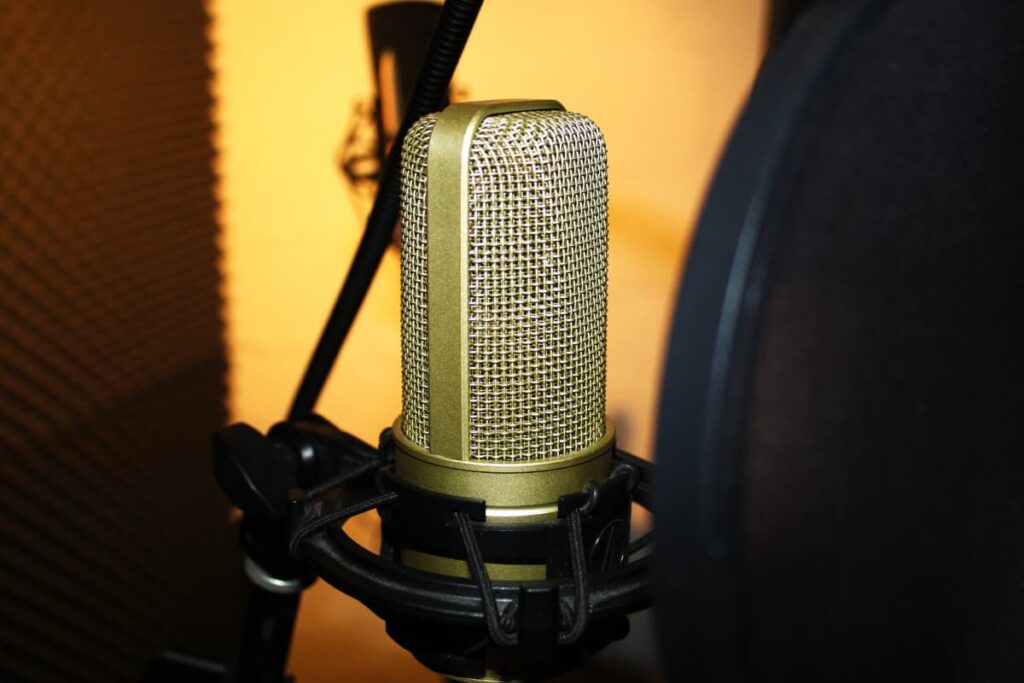Phantom power is a common power source for active microphones, especially condenser microphones. A condenser microphone doesn’t work without an external power supply, and phantom power is a frequent source.
While dynamic microphones don’t need phantom power, you might not have a choice but to connect the mic to it, making you worry about damaging it.
It is not bad to give phantom power to dynamic microphones. Dynamic microphones don’t need it, but they will not be affected by it. They can ignore it if applied, so there’s no damage, provided you connect them with balanced XLR cables.
This article will give you a brief overview of phantom power and how it interacts with your dynamic mic. Read on to learn more and discover why you don’t need to worry about using a dynamic mic with phantom power.

What Is Phantom Power?
Phantom power is a method of powering condenser microphones. It refers to a direct current, usually at +48 V, sent from another device through the microphone cable. Condenser microphones need an external power source to work, which is the most common way of providing it.
Condenser Mics
Condenser mics have internal components that need an electrical current to work but don’t produce any power.
Since condenser microphones can’t make their own power, they need an external source (they require phantom power) to give them that power to run correctly. This power usually comes from devices such as:
- Microphone preamps
- Audio interfaces
- Standalone power supplies
- Mixing consoles
Phantom power travels through the same cable that it uses for audio. No visible wire transfers the electrical current from the source to the microphone, leading to the name “phantom power.”
When this current reaches the microphone, it powers components such as:
- Internal preamps
- Impedance converters
- And polarizes certain capsules
Phantom power is not the only way to power a condenser microphone (or any other active mic), but phantom power is the most common way. Phantom power usually relies on a +48 V current, but there are other options, such as:
- +12 V
- +15 V
- +18 V
- +24 V
Some microphones don’t require as much phantom power to run, so you can lower power draw by using a level closer to what it needs. However, most mics need 48 V and won’t work at a lower power level.
Do Dynamic Mics Need Phantom Power?
Dynamic mics don’t require phantom power. They don’t need it because of their simple design. No charge is necessary between the backplate and diaphragm, so they don’t need to be powered.
Dynamic microphones feature a much more rudimentary design than a condenser microphone.
To work, they utilize a coil that is between two magnets. The coil moves and sends a current to an amplifier or other sound processing devices when you speak, sing, or play into it.
Since this simple mechanism doesn’t require a charge, they don’t require phantom power. In fact, these microphones don’t need to be powered. Of course, the audio signal created this way is feeble, so you need to plug the microphone into another device.
It does what it’s supposed to do even when not plugged in, so it technically doesn’t require phantom power- or any power at all.
Are There Benefits to Using Phantom Power?
There are some benefits to using phantom power with your dynamic microphone. You won’t need to use as many bulky wires, which is suitable for many situations.
So, it’s good if you don’t want to carry around as many thick cables. However, phantom power doesn’t reduce noise, although it will make it easier for your mic to record sound.
Can Phantom Power Damage Dynamic Microphones?
Phantom power cannot damage dynamic microphones. Modern dynamic microphones are made to ignore phantom power and are not affected by it. Unless something goes wrong with your gear, your dynamic microphone can’t take damage from phantom power.
Many people believe using phantom power can cause damage to a dynamic microphone. After all, if you power something that doesn’t require it, you can only run into trouble, right?
Is it Bad to give Dynamic Mics Phantom Power
However, in some situations, you might have no choice but to use a dynamic microphone with phantom power.
For example, you might be trying to record your guitar and vocals simultaneously, and you’re using a condenser mic for your vocals and a dynamic mic for your guitar amp. In that case, you’d have to turn phantom power on to use your condenser mic.
You’ll be happy to hear that phantom power can’t damage your dynamic microphone. Let’s examine why.
Why Phantom Power Doesn’t Damage a Dynamic Microphone
Brands make their modern dynamic microphones able to accept phantom power and not use it, simply ignoring it.
This feature is primarily due to the XLR cables that plug microphones into audio interfaces or other audio devices.
The voltage on pins two and three on an XLR cable plug is the same, which means nothing will happen. For the current to start flowing, there must be a difference between the two pins.
Since the voltage is the same, the phantom power current will not begin flowing, and nothing will happen to your dynamic microphone. It will continue working as if there were no phantom power.
Can Phantom Power Damage a Ribbon Microphone?
Phantom power can’t damage a ribbon microphone. As long as you’re using an XLR cable, nothing will happen to your ribbon mic, as the pins will align correctly right away.
Modern ribbon mics are a type of dynamic microphone. They’re known to be flimsier and more delicate than typical dynamic microphones, which might raise worries about using them with phantom power.
Even though they are rather delicate, they are not affected by phantom power. You should be fine if you’re using an XLR connector. However, you may run into problems if you try to use a patch bay. In those rare cases, you may cause damage to your ribbon mics, but you should be fine otherwise.
Final Thoughts on Phantom Power and Dynamic Mics
Giving phantom power to a dynamic microphone is unnecessary but is not harmful, either.
Your dynamic microphone will simply ignore phantom power, and nothing will happen as long as you’re using an XLR plug, preventing an excessive current from flowing to your microphone.
In short, modern microphone manufacturers consider phantom power, so you shouldn’t have to worry about damaging your equipment.
- Review of the ALABS IRON MINI-WL: A Powerhouse Wireless Microphone - October 4, 2023
- What is a Saturator in Music Production: A Brief Explanation - May 11, 2023
- What Are Rotary DJ Mixers? An Overview - May 11, 2023
SoundStudiomagic.com is a participant in the Amazon Services LLC Associates Program, an affiliate advertising program designed to provide a means for sites to earn advertising fees by advertising and linking to Amazon.com. We also participate in other affiliate programs which compensate us for referring traffic.

